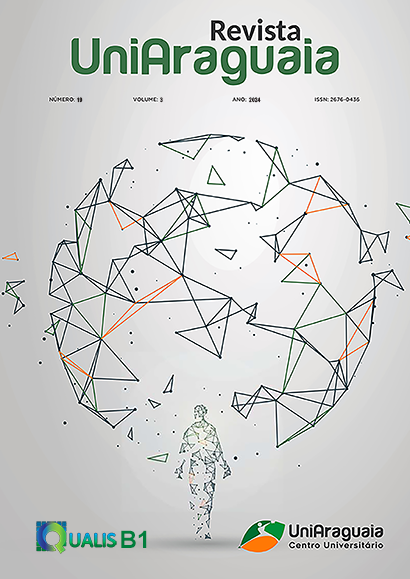INCREASING DOSES OF LIMESTONE EVALUATED IN CAPIAÇU BRS GRASS CULTIVATED IN CERRADO SOIL
Abstract
This research was carried out with the objective of verifying the effect of increasing doses of dolomitic limestone on the development of Capiaçu grass BRS. For this, a test was carried out, under controlled conditions, using doses of 0; 1.0; 2.0 e 4,0 t/ha of dolomitic limestone with 12% magnesium oxide and approximately 25% to 30% calcium oxide in four replications. Soil fertility was corrected by applying a basic fertilizer consisting of 100 kg/ha of P2O5 as Yoorin master S1 (16%), 60 kg/ha of K2O as potassium chloride (58%) and 20 kg of FTE Br12 as a source of micronutrients. The seedlings originated from selected matrices from plants grown in isolated locations. These plants were replanted in a controlled environment, until they developed the root system to be definitively replanted in ten-liter plastic pots. The soil used was an Acric RED OXISOL from the low-fertility cerrado. The seedlings remained growing for 90 days after transplanting. The parameters, mass production, height, number of tillers and plant diameter were collected to characterize the comparative development of lime doses in the development of Capiaçu. Correction of soil acidity and fertilizers were applied only in the first cultivation. The second and third shoots were developed using the residue of fertilizers and limestone as is done in the practice of farmers. The averages were subjected to regression analysis to determine the limestone dosage necessary to achieve maximum production at 2,5t/ha. The culture of this forage responded to limestone in all three cuts made.
Downloads
Published
Issue
Section
License

This work is licensed under a Creative Commons Attribution 4.0 International License.
The copyright of the published articles will be transferred to the Uniaaraguaia Magazine, allowing its subsequent reproduction as transcription and with due citation of source. In the event of acceptance and before the publication of the article, the plaintiff (s) shall write a statement formally transferring copyright to the magazine.
The author may also print and distribute copies of his article, provided that he mentions that the rights belong to the Uniaaraguaia Magazine.
Author rights include the right to reproduce in full or partly by any means, distribute this article, including figures and photographs.
By submitting originals to the Uniaaraguaia magazine, the author or authors express agreement with the following terms:
a) Authors maintain copyright and grant Uniaraguaia magazine the right of first publication, with the work simultaneously licensed under the Creative Commons Attribution license that allows the sharing of work with recognition of the authorship and initial publication in this magazine.
b) Authors are authorized to assume additional contracts separately, for non-expiration distribution of the work version published in this magazine (eg publish in institutional repository or as book chapter), with recognition of authorship and initial publication in this journal.
c) Authors are allowed and are encouraged to publish and distribute their work online (eg in institutional repositories or on their personal page) to any point before or during the editorial process, as this can generate productive changes as well as increase the impact and citation of published work.

